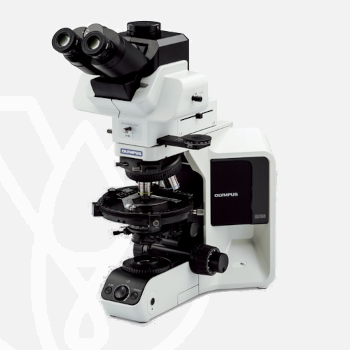
Olympus Upright Microscope BX53-P
The Olympus BX53-P polarizing microscope provides superb performance in polarized light applications using a combination of UIS2 infinity-corrected optics and a distinctive optical design. An extended line of compatible compensators makes the BX53-P upright microscope versatile enough to handle observation and measuring applications in virtually any field.
UIS2 Optics Provide Outstanding Expandability
Maximizing the advantages of infinity correction, the UIS2 optical system helps prevent the deterioration of optical microscope performance and eliminates magnification factors, even when polarizing elements, like analyzers, tint plates, or compensators, are introduced into the light path. The BX53-P microscope also accepts intermediate attachments available for BX3 series microscopes, as well as cameras and imaging systems.
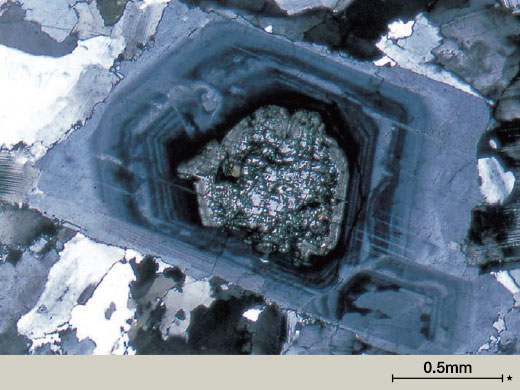
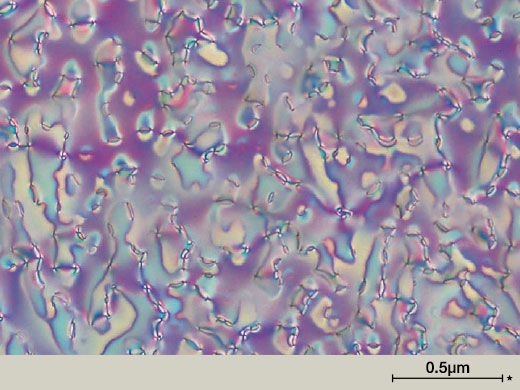
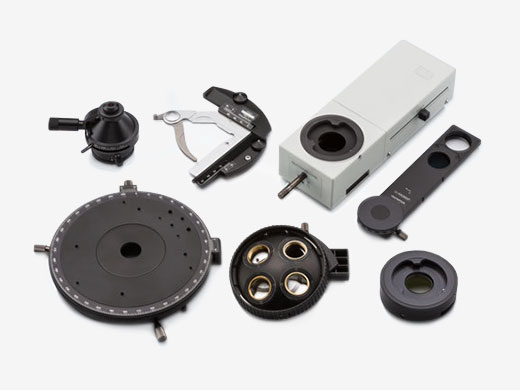
Bertrand Lens for Conoscopic and Orthoscopic Observations
With a conoscopic observation attachment, switching between orthoscopic and conoscopic observation is simple. It is focusable for viewing of clear back focal plane interference patterns. The Bertrand lens is focusable for clear viewing back focal plane interference patterns. The field stop makes it possible to consistently obtain sharp conoscopic images.
An Extensive Range of Compensators and Wave Plates
Six different compensators are available for measurements of birefringence in rock and mineral thin sections. Measurement retardation level ranges from 0 to 20λ. For easier measurement and high image contrast, Berek and Senarmont
compensators can be used, which change the retardation level in the entire field of view.
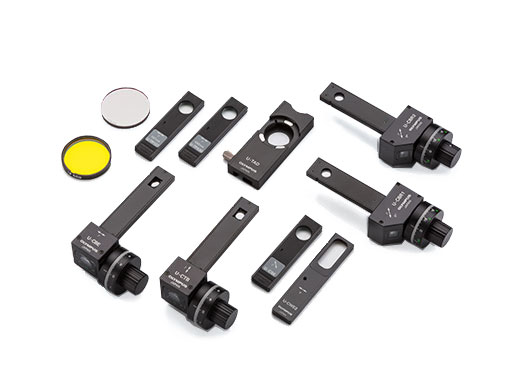
MEASURING RANGE OF COMPENSATORS
| Compensator | Measurement | Range Applications |
| Thick Berek (U-CTB) | 0–11000 nm (20λ) | Measurement of high retardation level (R*>3λ), (crystals, macromolecules,fi ber, etc.) |
| Berek (U-CBE) | 0–1640 nm (3λ) | Measurement of retardation level (crystals,macromolecules, living organisms, etc.) |
| Senarmont Compensator (U-CSE) | 0–546 nm (1λ) | Measurement of retardation level (crystals, living organisms, etc.); enhancement of image contrast (living organisms,etc.) |
| Brace-Koehler Compensator1/10λ (U-CBR1) | 0–55 nm (1/10λ) | Measurement of low retardation level (living organisms, etc.) |
| Brace-Koehler Compensator1/30λ (U-CBE2) | 0–20 nm (1/30λ) | Measurement of image contrast (living organisms,etc.) |
| Quartz Wedge (U-CWE2) | 500–2200 nm (4λ) | Approximate measurement of retardation level (crystal, macromolecules, etc.) |
*R = retardation level
For more accurate measurement, we recommend that compensators (except U-CWE2) be used together with the interference fi lter 45-IF546
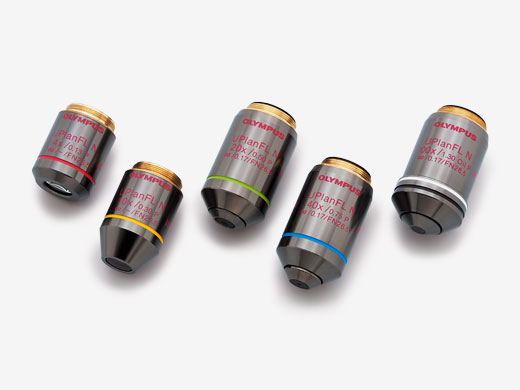
Minimal Strain Optics
Our polarized light objectives reduce internal strain to a minimum. This means a higher EF value, resulting in excellent image contrast.
Robust and Accurate Rotating Stage
The rotating-centering mechanism attached to the rotary stage enables smooth rotation of a specimen. In addition, there is a click-stop mechanism at each 45 degrees for precise measurement. With the optional dual-mechanical stage, discreet X-Y movement is possible.
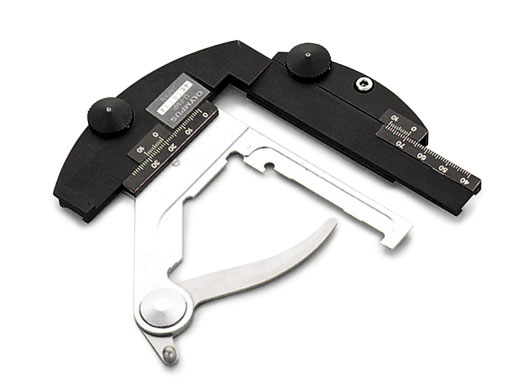
| Observation Method | Brightfield | ||
|---|---|---|---|
| Polarized Light | |||
| Simple Polarized Light | |||
| Focus | Focusing Mechanism | Stage Focus | |
| Stage | Mechanical | Precision Rotatable Stage |
|
| Condenser | Manual | Polarizing Condenser | NA 0.9/ W.D. 1.3 mm (slide glass 1.5 mm) (4X–100X) |
| Observation Tubes | Widefield (FN 22) | Trinocular | |
| Tilting Trinocular | |||
| Dimensions (W × D × H) | 274 (W) x 436 (D) x 535 (H) mm | ||
| Weight | 16 kg | ||
For other products from Evident-Olympus, click here.
